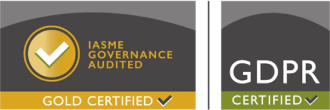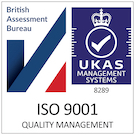
Posted: 16th June 2020
If there’s a chance your PC has a virus, the number one thing you shouldn’t do is ignore it. Firstly, the slow performance is sure to raise your blood pressure, and secondly, continued use of an infected device can leave you vulnerable to cyber attacks at a heavy cost.
What are the signs your PC has a virus?
You don’t have to be an IT specialist to suspect a virus on your PC or laptop. There are several common signs you can look out for:
Frustratingly slow
If your computer begins to run significantly slower (we’re talking, time to make a coffee while Outlook loads), there’s a good chance that there’s a programme running in the background that probably shouldn’t be there.
Annoying pop-ups
They could pop up on your homepage or while using your browser, either way, by design, you can’t miss them! It’s good first to check if they are related to any chosen Chrome extension. If not, a virus is likely the root of the problem.
Noisy
If you notice your fan firing up when you access your hard drive or storage, a virus should be your first suspicion.
Unfamiliar programmes
Never ignore a new icon. These can show up in your systems tray and be easily dismissed but the chances are it’s a malicious programme that shouldn’t be there and requires action.
Change in behaviour
All computers develop tics with age, but any ‘overnight’ changes in the behaviour of your hardware should be looked into to be on the safe side.
You could be experiencing some of these issues without any malicious root cause; in this case, take a look at these quick fixes: 10 Common IT Problems and How To Solve Them.
Steps to take if you think you PC has a virus.
If all this sounds familiar, you must take action sooner rather than later. Letting a virus fester leaves you open to a cyber attack that could cost you money, data, or both.
Step 1: ensure you have adequate anti-virus software
Free anti-virus solutions may be adequate for your home PC, but business systems should have a good market-leading product that is automatically updated regularly.
Step 2: update and disconnect
Firstly, check your machine is running the most up-to-date version of your software – every update includes the odd security patch so make sure you keep on top of these.
When you know your system is up-to-date, you need to disconnect from the internet – you can do this via your PC or simply unplug your router for certainty.
Step 3: safe mode
Now it’s time to restart your PC in safe mode: Go to settings > Update and security > Recovery. From here, select Restart now.
Step 4: time to scan
When your PC reboots, it’s time to run your virus scanner. Right-clicking on the AV icon in your system tray will give you an option to perform a “Deep Scan”. This will hunt down the cause of any suspicious behaviour.
Step 5: start afresh
Finally, when the scan is complete and any necessary action has been taken, you should restart your machine. It’s helpful to evaluate the process you’ve been through by doing a few daily tasks that have caused issues. With any luck, you’ve nailed it!
Step 6: alert others
Never assume that because the virus is gone, all is forgotten. It’s good practice to alert colleagues to your experience in case of any spread; it’s also wise to let your IT service provider know for reference.
We’re passionate about cyber security.
Our blog contains a wealth of hints and tips on how to stay cyber safe including our 25 cyber security tips for your business – with some really useful points for you to share with your staff.
As cyber crime grows more sophisticated, we know that pristine cyber security has never been more important for businesses. That’s why we provide free, content-rich, cyber security staff training for all our clients.
To find out more, drop us a line – we’re waiting to share our expertise with you.








